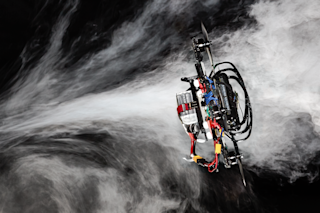When it comes to designing better gizmos, efficiency is the name of the game. Why have two separate components to do two separate tasks, if you can have one do both? We have a whole bird-killing metaphor about how great it is to be efficient.
Well, what’s good for the goose, it turns out, is also good for the robot fish.
A team of engineers at Cornell and the University of Pennsylvania have created a soft fish-shaped robot whose blood does double duty as both muscles and battery. It can operate autonomously for over a day and a half, and even swims upstream at a respectable speed. The invention’s success is a boon not just for aquatic bot enthusiasts, but also for engineers looking for ways to improve efficiency in future robot designs — and anyone who’d benefit from this new and improved kind of liquid battery.
Their work appears ...














